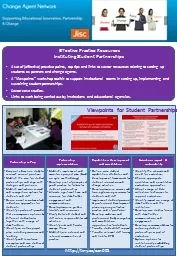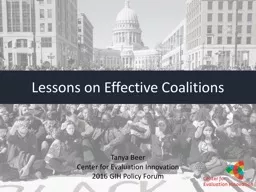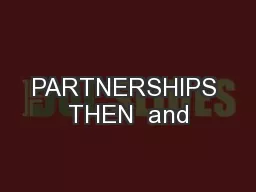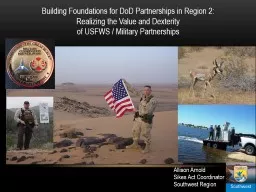PPT-Building Coalitions and Partnerships through
Author : liane-varnes | Published Date : 2018-02-26
Stakeholder Engagement Tina Nabatchi PhD Maxwell School of Citizenship amp Public Affairs Syracuse University tnabatchsyredu Agenda Who are stakeholders and what
Presentation Embed Code
Download Presentation
Download Presentation The PPT/PDF document "Building Coalitions and Partnerships thr..." is the property of its rightful owner. Permission is granted to download and print the materials on this website for personal, non-commercial use only, and to display it on your personal computer provided you do not modify the materials and that you retain all copyright notices contained in the materials. By downloading content from our website, you accept the terms of this agreement.
Building Coalitions and Partnerships through: Transcript
Download Rules Of Document
"Building Coalitions and Partnerships through"The content belongs to its owner. You may download and print it for personal use, without modification, and keep all copyright notices. By downloading, you agree to these terms.
Related Documents














